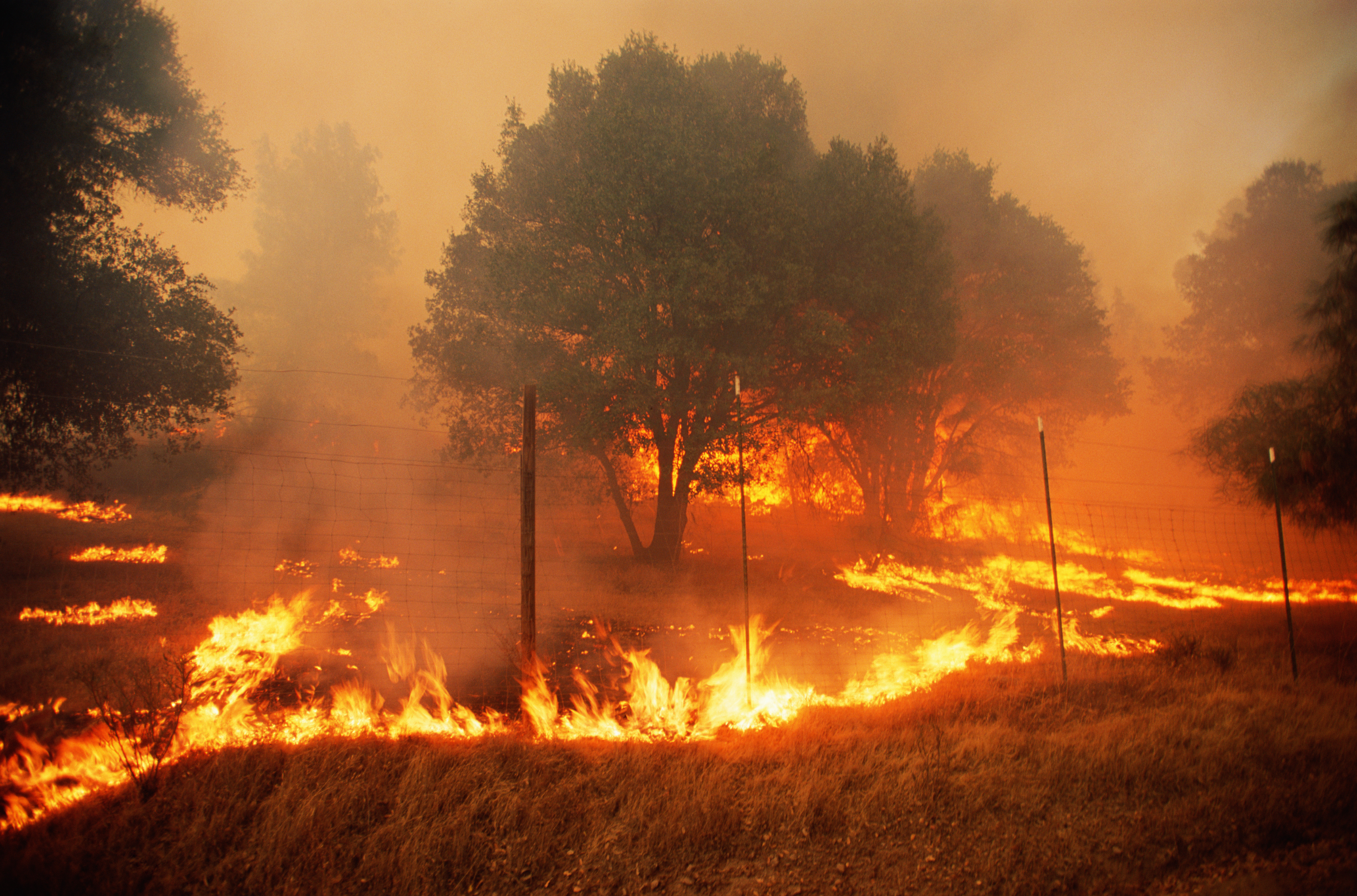AARP Hearing Center

When Julia Yarbough received the emergency text alert to leave her northern California home ahead of the Park Fire in July 2024, she was ready to go.
She and her husband grabbed bags with changes of clothes, socks, underwear, toiletries and pajamas, as well as bins with copies of birth certificates, the house deed, passports, wills, diplomas and some photos. Their gas tank was full.
From emergency alert to hitting the road: 20 minutes.
Several hours later — safely in their camper in front of a friend’s home — they watched a security-camera feed of fire destroying their home.
“We lost everything, but lost nothing,” says Yarbough, 59, a journalist and AARP volunteer. “We had our personal essentials and each other.”
The couple now lives in Bellevue, Washington, and Yarbough is part of AARP’s efforts to help caregivers and their older loved ones plan for natural disasters like the one she lived through.
September is National Preparedness Month, which AARP Washington will observe with virtual training sessions to help older adults and the families that care for them stay safe. The programs will discuss how to create plans, protect property and finances, and learn about Washington’s natural risks. You can register for the free sessions at aarp.org/disasterprepwa. Watch live or view a recording later.
Washington’s older population is growing, as is the number of severe storms and other weather-related disasters. But plenty of Washingtonians aren’t as prepared for the next disaster as officials say they should be.
In a 2023 AARP survey of U.S. adults 50 and older, 59 percent said they felt ready for a natural disaster. But most also said they did not have an emergency portable charger for mobile devices or digital copies of important documents — nor had they signed up to receive emergency alerts.
Hollie Stark, the outreach program manager for Washington’s Emergency Management Division, advises caregivers to assess hazards, make a plan and gather supplies now — not just as a storm, heat wave, wildfire or other disaster appears in the forecast.
“We call them natural hazards, not disasters,” Stark says. “A disaster is what can happen when people don’t take necessary protective actions. The most important takeaway is to start preparing now to reduce your risk.”
'ERR ON THE SIDE OF CAUTION'
Stark adds that it’s crucial to subscribe to and understand emergency alerts, which advise when to evacuate, when to hole up and leave roads clear for emergency responders, and when danger is not imminent. Helping older adults get out safely takes more time, she says.
“Err on the side of caution,” she says. “You won’t be at a loss for leaving your home early.”
Planning is also essential in maintaining the safety of loved ones in care facilities. Richard Freed, the emergency preparedness coordinator for residential care services at the state Department of Social and Health Services, says Washington nursing homes are required to have disaster plans.
Having go bags in the room of a loved one — with clothes, chargers, medicine, games, snacks—is vital since facilities have to focus on basic needs during an emergency, not secure personal items that offer comfort. Regardless of how close or far you live from an older loved one, stay in touch.
For example, if your father lives in Spokane and it’s supposed to hit 100 degrees, ask your dad how he’s feeling. “If he says ‘We’re all sweating here,’ something’s wrong,” Freed says. “It might be time to call that administrator.”
As for Yarbough and her husband, they have their go bags packed and have assessed the exits in their apartment building.
“The more you can do at the front end, the better you’ll be 24 hours later, and the day after that,” she says. ■
Jane Gottlieb, a freelance journalist based in Albany, New York, writes frequently about public policy.
With natural disasters rising in frequency and severity, caregivers increasingly need to prepare not only themselves, but also older loved ones. Emergency-preparedness officials offer these tips:
- Learn the natural threats — be they earthquakes, droughts or wildfires — of a region when deciding where an older adult will live, and prepare accordingly.
- Subscribe to emergency alerts, which advise when to evacuate.
- Prepare go bags for yourself and an older adult that will be good for 72 hours; include prescriptions, contacts, personal keepsakes and favorite snacks.
- Allow more time to help an older person evacuate calmly, particularly if they require a walker, wheelchair or breathing apparatus.
- Be aware of “quieter” emegerncies such as extreme heat or cold.
- Have copies of loved ones’ documents.
- Keep phones charged.
- Remember to take care of yourself; arrange backup help to ease your stress.
- Review your care facility’s disaster plan; make sure it has emergency communication procedures and backup power.
More on Preparedness
- AARP Disaster Resilience Tool Kit
- 8 Essential Items for an Emergency To-Go Bag
- How to Recover from a Natural Disaster































































